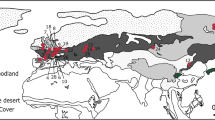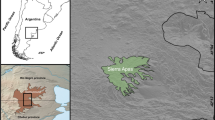Abstract
Indian free-ranging dogs live in a carbohydrate-rich environment as scavengers in and around human settlements. They rarely hunt and consequently do not encounter rich sources of protein. Instead, they have adapted to a diet of primarily carbohydrates. As descendents of the exclusively carnivorous wolves, they are subjected to the evolutionary load of a physiological demand for proteins. To meet their protein needs, they resort to a Rule of Thumb—if it smells like meat, eat it. Pups face high competition from group and non-group members and are in a phase of rapid growth with high protein demands. Following the Rule of Thumb, they can acquire more protein at the cost of increased competition and reduced supplementary non-protein nutrition. However, if the mother supplements their diet with protein-rich regurgitates and/or milk, then the pups can benefit by being generalists. Using a choice test in the field, we show that, while adults have a clear preference for meat, pups have no such preference, and they even eagerly eat degraded protein. Thus, the Rule of Thumb used by adult dogs for efficient scavenging is not innate and needs to be learned. The Rule of Thumb might be acquired by cultural transmission, through exposure to meat in the mother’s regurgitate, or while accompanying her on foraging trips.


Similar content being viewed by others
References
Axelsson E, Ratnakumar A, Arendt M-L et al (2013) The genomic signature of dog domestication reveals adaptation to a starch-rich diet. Nature 000:1–5. doi:10.1038/nature11837
Boitani L (1983) Wolf and dog competition in Italy. Acta Zool Fenn 174:259–264
Bonanni R, Valsecchi P, Natoli E (2010) Pattern of individual participation and cheating in conflicts between groups of free-ranging dogs. Anim Behav 79:957–968. doi:10.1016/j.anbehav.2010.01.016
Butler J, Du Toit J, Bingham J (2004) Free-ranging domestic dogs (Canis familiaris) as predators and prey in rural Zimbabwe: threats of competition and disease to large wild carnivores. Biol Conserv 115:369–378
Cafazzo S, Valsecchi P, Bonanni R, Natoli E (2010) Dominance in relation to age, sex, and competitive contexts in a group of free-ranging domestic dogs. Behav Ecol 21:443–455. doi:10.1093/beheco/arq001
Campbell R (1976) A note on the use of feed flavour to stimulate the feed intake of weaner pigs. Anim Prod 23:417–419
Case LP, Daristotle L, Hayek MG, Raasch MF (2010) Protein requirements. Canine and feline nutrition: a resource for companion animal professionals, 3rd edn. Mosby, Missouri
Daniels TJ, Bekoff M (1989) Population and social biology of free-ranging dogs, canis familiaris. J Mammal 70:754–762
De Balogh K (1993) A dog ecology study in an urban and a semi-rural area of Zambia. Onderstepoort J Vet Res 60:437–443
Debroy B (2008) Sarama and her children: the dog in Indian myth. Penguin, India
Edney A, Smith P (1986) Study of obesity in dogs visiting veterinary practices in the United Kingdom. Vet Rec 118(14):391–396. doi:10.1136/vr.118.14.391
Ellins S, Catalano S, Schechinger S (1977) Conditioned taste aversion: a field application to coyote predation on sheep. Behav Biol 20:91–95
Ferrell F (1984a) Taste bud morphology in the fetal and neonatal dog. Neurosci Biobehav Rev 8:175–183
Ferrell F (1984b) Effects of restricted dietary flavor experience before weaning on postweaning food preference in puppies. Neurosci Biobehav Rev 8:191–198
Forbes GJ, Theberge JB (1992) Importance of scavenging on moose by wolves in Algonquin Park, Ontario. ALCES 28:235–241
Fox PF, McSweeney PLH (2003) Milk proteins: general and historical aspects. Advanced dairy chemistry—1 proteins. Springer, Boston, pp 1–48
Galef BG, Henderson PW (1972) Mother’s milk: a determinant of the feeding preferences of weaning rat pups. J Comp Physiol Psychol 78:213–219
German A (2006) The growing problem of obesity in dogs and cats. J Nutr 136(7 Suppl):1940S–1946S
Griffin R, Scott G, Cante C (1984) Food preferences of dogs housed in testing-kennels and in consumers’ homes: some comparisons. Neurosci Biobehav Rev 8:253–259
Hewson-Hughes AK, Hewson-Hughes VL, Colyer A et al (2013) Geometric analysis of macronutrient selection in breeds of the domestic dog, Canis lupus familiaris. Behav Ecol 24:293–304. doi:10.1093/beheco/ars168
Houpt KA, Hintz HF, Shepherd P (1978) The role of olfaction in canine food preferences. Chem Senses 3:281–290. doi:10.1093/chemse/3.3.281
Kato M, Yamamoto H (2003) Survey of the stray dog population and the health education program on the prevention of dog bites and dog-acquired infections: a comparative study in Nepal. Acta Med Okayama 57(5):261–266
Kruuk H, Snell H (1981) Prey selection by feral dogs from a population of marine iguanas (Amblyrhynchus cristatus). J Appl Ecol 18:197–204
Kuo Z (1967) The dynamics of behavioral development: an epigenetic view. Random House, New York
LeMagnen J (1967) Habits and food intake. In: Code CF (ed) Handbook of physiology, vol 1. American Physiological Society, Washington, D.C., pp 11–30
Macdonald DW (1983) The ecology of carnivore social behaviour. Nature 301:379–384
Sen Majumder S, Bhadra A, Ghosh A, Mitra S, Bhattacharjee D, Chatterjee J, Nandi AK, Bhadra A (2013) To be or not to be social: foraging associations of free-ranging dogs in an urban ecosystem. Acta Ethol. doi:10.1007/s10211-013-0158-0
Malm K, Jensen P (1993) Regurgitation as a weaning strategy—a selective review on an old subject in a new light. Appl Anim Behav Sci 36:47–64
Malm K, Jensen P (2010) Weaning and parent-offspring conflict in the domestic dog. Ethology 103:653–664. doi:10.1111/j.1439-0310.1997.tb00176.x
McFarland DJ (1978) Hunger in interaction with other aspects of motivation. In: Booth DA (ed) Hunger models: computable theory of feeding control. Academic, London, pp 375–405
McGreevy P, Thomson P (2005) Prevalence of obesity in dogs examined by Australian veterinary practices and the risk factors involved. Vet Rec 156(22):695–702
Mech L, Boitani L (2003) Wolves: behaviour, ecology and conservation. University of Chicago Press, Chicago
Mennella J, Beauchamp G (1994) Early flavor experiences: when do they start? Nutr Today 29(5):25–31
Mistretta CM, Bradley RM (1983) Neural basis of developing salt taste sensation: response changes in fetal, postnatal, and adult sheep. J Comp Neurol 215:199–210. doi:10.1002/cne.902150207
Mohan V, Radhika G, Sathya RM et al (2009) Dietary carbohydrates, glycaemic load, food groups and newly detected type 2 diabetes among urban Asian Indian population in Chennai, India (Chennai Urban Rural Epidemiology Study 59). Br J Nutr 102:1498–1506. doi:10.1017/S0007114509990468
Morey D (1992) Size, shape and development in the evolution of the domestic dog. J Archaeol Sci 19:181–204
Mugford RA (1977) External influences on the feeding of carnivores. In: Kare MR (ed) The chemical senses and nutrition. Academic, New York, pp 25–50
Mukai J, Tokuyama E, Ishizaka T et al (2009) The effect of taste–odour interactions on the palatability of nutritional products for liver failure. Asian J Pharm Sci 4:46–55
Nachman M (1959) The inheritance of saccharin preference. J Comp Physiol Psychol 52:451–457
National Research Council (2006) Nutrient requirements of dogs and cats. The National Academies Press, Washington, D.C.
Oftedal OT (1984) Lactation in the dog: milk composition and intake by puppies. J Nutr 114:803–812
Ontko JA, Wuthier RE, Phillips PH (1957) The effect of increased dietary fat upon the protein requirement of the growing dog. J Nutr 62:163–169
Ortega-Pacheco A, Rodriguez-Buenfil JC, Bolio-Gonzalez ME et al (2007) A survey of dog populations in urban and rural areas of Yucatan, Mexico. Anthrozoös 20:261–274
Pal S (2001) Population ecology of free-ranging urban dogs in West Bengal, India. Acta Theriol 46:69–78
Pal S (2005) Parental care in free-ranging dogs, Canis familiaris. Appl Anim Behav Sci 90:31–47
Pal S (2008) Maturation and development of social behaviour during early ontogeny in free-ranging dog puppies in West Bengal, India. Appl Anim Behav Sci 111(1):95–107
Pal SK, Ghosh B, Roy S (1998) Dispersal behaviour of free-ranging dogs (Canis familiaris) in relation to age, sex, season and dispersal distance. Appl Anim Behav Sci 61:123–132. doi:10.1016/S0168-1591(98)00185-3
Pryor KW (2001) Cultural transmission of behavior in animals: how a modern training technology uses spontaneous social imitation in cetaceans and facilitates social imitation in horses and dogs. Behav Brain Sci 24:352. doi:10.1017/S0140525X01523961
Pyke G (1984) Optimal foraging theory: a critical review. Annu Rev Ecol Syst 15:523–575
Rathore A (1984) Evaluation of lithium chloride taste aversion in penned domestic dogs. J Wildl Manag 48:1424
Rozin P (1967) Specific aversions as a component of specific hungers. J Comp Physiol Psychol 64:237–242
Scott EM (1946) Self selection of diet I. Selection of purified components. J Nutr 31:397–406
Spotte S (2012) Societies of wolves and free-ranging dogs. Cambridge University Press, Cambridge.
Thorne C (1995) Feeding behaviour of domestic dogs and the role of experience. In: Serpell J (ed) The domestic dog: its evolution, behaviour and interactions with people. Cambridge University Press, Cambridge, pp 103–114
Trivers RL (1974) Parent-offspring conflict. Am Zool 14:249–264. doi:10.1093/icb/14.1.249
Vanak AT, Gompper ME (2009) Dietary niche separation between sympatric free-ranging domestic dogs and Indian foxes in Central India. J Mammal 90:1058–1065
Vanak AT, Thaker M, Gompper ME (2009) Experimental examination of behavioural interactions between free-ranging wild and domestic canids. Behav Ecol Sociobiol 64:279–287. doi:10.1007/s00265-009-0845-z
Waterlow JC (1986) Metabolic adaptation to low intakes of energy and protein. Annu Rev Nutr 6:495–526. doi:10.1146/annurev.nu.06.070186.002431
Weech AA, Goettsch E, Reeves EB (1935) Nutritional edema in the dog: I. Development of hypoproteinemia on a diet deficient in protein. J Exp Med 61:299–317. doi:10.1084/jem.61.3.299
Acknowledgments
The experiments were designed and carried out by Anandarup Bhadra (Ar.B.). A.B. supervised the work and co-wrote the paper with Ar.B. Tithi Roy helped with the field work during these experiments. Our experiments comply with the regulations for animal care in India. We thank IISER-K for funding this research.
Author information
Authors and Affiliations
Corresponding author
Electronic supplementary material
Below is the link to the electronic supplementary material.
Supplementary material 2 (MP4 21780 kb)
About this article
Cite this article
Bhadra, A., Bhadra, A. Preference for meat is not innate in dogs. J Ethol 32, 15–22 (2014). https://doi.org/10.1007/s10164-013-0388-7
Received:
Accepted:
Published:
Issue Date:
DOI: https://doi.org/10.1007/s10164-013-0388-7




